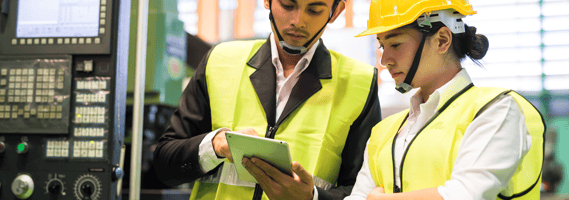Mobility as a revolution is playing an ever-increasing role in the business world. Unlocking new capabilities for consuming and processing information is radically changing the way enterprises conduct business. According to leading industry analysts 50% of business applications will be accessed through mobile within two years.
As your enterprise embarks on the mobile journey, it is important to understand the benefits of SAP Enterprise Mobility. SAP Enterprise Mobility can help businesses achieve their goals by:
- Increasing productivity: SAP Enterprise Mobility can help businesses improve employee productivity by providing them with access to business applications on their mobile devices. This can save businesses time and money, and it can also help them to improve customer service.
- Improving customer service: SAP Enterprise Mobility can help businesses improve customer service by providing their employees with the ability to access customer information and interact with customers on the go. This can help businesses to resolve customer issues more quickly and efficiently, and it can also help them to build stronger relationships with their customers.
- Reducing costs: SAP Enterprise Mobility can help businesses reduce costs by eliminating the need for employees to travel to and from the office to access business applications. This can save businesses money on travel expenses, and it can also help them to reduce their carbon footprint.
Businesses using SAP and opting for SAP Enterprise Mobility, need to understand the diversified users of business mobile community to achieve the benefits of SAP Enterprise Mobility. Mobile solutions vary depending on the specific business and functional needs of a particular community. Business mobile community can be broken into three distinct groups:
-
Casual users: These users very rarely have the need to use an SAP system and rarely tend to adopt SAP on their desktop/laptop. Casual users in your enterprise are constantly looking for easier, consumer grade solutions to complete their casual functions with minimal training. Administrate tasks such as entering a travel & expense report, submitting their time sheets or approving purchase requisitions, purchase orders or invoices don’t necessarily require a casual user to be trained in SAP. Instead, if an enterprise can mobilize these functions with consumer grade and intuitive solutions like SAP Fiori or Innovapptive’s mPower™ Apps Suite, the overall administrative cost per employee is significantly reduced.
-
Professional users: These users are typically field workers where mobility plays a vital role to perform their routine day to day functions. Field engineers, technicians and service representatives have minimal access to a desktop and laptop but require access and process critical information at the point of service delivery. Usage of mobility by these professional users provides a superior and high level of service to customers with the ability to centrally update and look up information anywhere and anytime. Deploying mobile solutions to these critical users, lowers administrative costs, enhances integrity, improves customer satisfaction and helps faster decision making.
-
Transactional users: These users use business applications on a daily basis and need the ability to query and enter new data. As full access to the entire suite is necessary and a simple business app may not full fill the requirement of a transactional users. Enterprise mobile solutions have to be designed to handle a quick-to-complete task, which thereby increases more professional level of customer related services by introducing new business practices and making full use of the ERP capabilities.
The road to mobilizing the above users should consider the below 3 critical aspects:
Step 1: Innovate and create a strong and foundational value road map
Innovate by understanding and prioritizing use cases by business value, type of apps, devices, simplicity, and ease of adoption. Ensure security and platform requirements are not compromised through this journey.
Step 2: Transform by introducing new levels of automation and productivity
True transformation can be achieved when the mobile solution has the ability to re-engineer core processes by automating routines to bring new levels of flexibility to the workforce, The use cases that are about to be deployed shall have the ability to move beyond industry norms and ‘business as usual’ engagement with customers and suppliers. It enables to transform partner, staff, and customer/supplier relationships.
Step 3: Empower your workforce to do more with less.
The results of mobilization should empower your enterprise with concrete returns on investments. Enterprises must find effective tools like the SAP Mobile Platform to monitor adoption, usage and other KPI’s that improve employee productivity at lower cost, improve data quality, and remain ahead of competition.
Request a demo today to see how SAP Enterprise Mobility can help your business.




